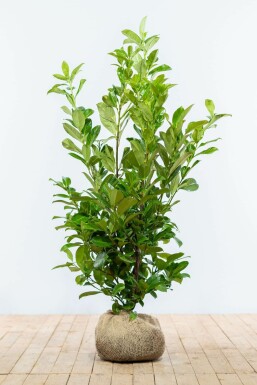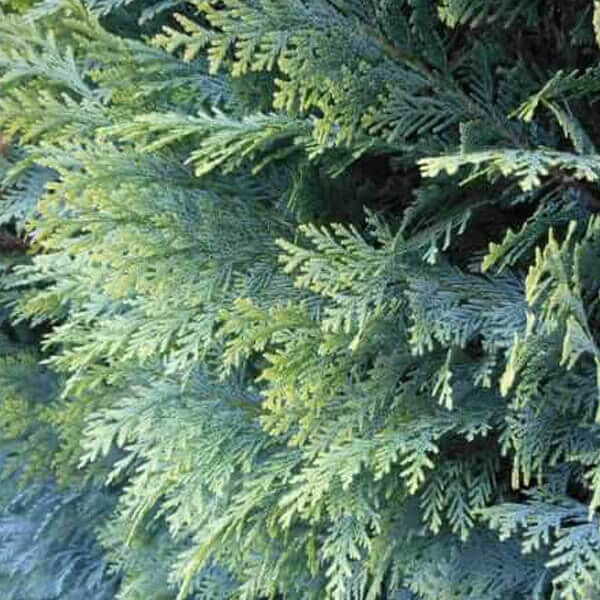Top Hedge Plants For Your Garden
Top Hedge Plants For Your Garden
Blog Article
Hedging Plants For Butterfly Gardens
Enhance your garden's allure with lavish hedge varieties such as Yew (Taxus), Thuja, Laurel, Photinia, and Bamboo, celebrated for their structural stability and environmental advantages.
Yew and Thuja provide evergreen protection and winter durability, while Laurel offers fast development and broad, fragrant leaves.
Photinia adds seasonal beauty with its lively red foliage, and Bamboo lends a low-maintenance, serene ambiance.
These hedges enhance air quality, minimize sound, and produce tranquil, private spaces.
Proper planting, spacing, and maintenance make sure vigorous growth and eco-friendly harmony.
Explore how these lavish ranges can elevate your garden's charm and well-being.
Secret Takeaways
Transform Your Garden With Lush Hedge Varieties
- Select Yew for its thick, evergreen development and unrivaled durability.
- Go with Laurel for its fast growth and broad leaves, guaranteeing fast personal privacy.
- Choose Photinia for its vibrant seasonal foliage, which turns a striking dark red.
- Use Bamboo for a low-maintenance, winter-hardy hedge with visual appeal.
- Area plants 2-3 per meter and prune frequently for optimal growth and health.
Popular Hedge Plants
When transforming a garden with rich hedge varieties, it's important to think about popular hedge plants such as Yew, Thuja, Laurel, and Photinia due to their special attributes and advantages.
Yew (Taxus) is extremely respected for its durability and thick, green growth, making it a prime choice for withstanding landscapes.
Thuja is noted for its evergreen foliage and robust winter strength.
Photinia includes seasonal vibrancy with red leaves that darken with time, creating dynamic visual appeal.
Laurel offers quick development and aromatic, broad leaves, suitable for quick privacy.
In Addition, Bamboo is an exceptional option for ambiance, offering a low-maintenance, winter-hardy alternative that boosts the garden's aesthetic with its stylish, swaying canes.
These selections cater to a range of horticultural requirements and preferences.
Advantages of Garden Hedges
Garden hedges use a wide variety of benefits, making them an important addition to any landscape. These natural barriers are economical to execute and supply considerable wind protection, enhancing air circulation and adding to noise decrease. The thick foliage of hedges like Thuja and Beech makes sure personal privacy by obstructing exposure, creating a remote and serene environment.
Hedges likewise play a crucial function in microclimate regulation, offering a steady environment that promotes plant development and minimizes temperature level fluctuations. Their complex leaf structures filter toxins, improving air quality and adding to a much healthier garden ecosystem.
Furthermore, hedges master noise reduction, soaking up and deflecting acoustic waves to lower ambient noise levels. This dual performance of supplying both visual and acoustic privacy boosts the total harmony and aesthetic appeal of any garden.
Planting and Maintenance Tips
For an effective hedge, careful preparation of the planting location is crucial. Guarantee the soil has appropriate pH and drain to support strong root advancement.
Space the plants appropriately for the chosen species. Water the hedge regularly during its initial growth phase, adjusting as needed with seasonal changes.
Execute a methodical insect control and disease prevention technique, using organic or chemical treatments when essential. Frequently inspect for aphids, termites, and fungal infections.
Apply mulch to maintain wetness and reduce weeds. Seasonal pruning promotes thick development and air blood circulation, necessary for plant health.
Following these standards will assist you cultivate a vibrant, well-maintained hedge that enhances the appeal of your garden.
Spacing and Cutting Guidelines
Spacing and Trimming Standards
Correct spacing and cutting are essential for cultivating healthy, aesthetically appealing hedges. Appropriate spacing guarantees each plant receives sufficient nutrients, light, and air flow.
Follow these standards for optimal hedge upkeep:
- Spacing: Position hedge plants 2-3 plants per meter to encourage robust development.
- Pruning Strategies: Regular pruning is essential for keeping wanted hedge height and shape. Cut brand-new development in summertime and cut down older wood during winter.
- Seasonal Care: Change trimming approaches and schedules according to seasonal requirements to ensure plant health.
- Hedge Height: Regularly screen and trim to preserve the desired hedge height and attain uniform aesthetics.
Following these actions will ensure your hedge prospers, enhancing both the appeal and performance of your garden.
Picking the Right Hedge
Selecting the Right Hedge
Picking the appropriate hedge includes evaluating factors such as mature height, foliage density, and ecological resilience. Successful hedge plant choice requires comprehending each types' growth qualities and site-specific flexibility.
For example, Yew (Taxus) provides exceptional longevity and dense development, while Thuja is significant for its winter season Additional hints resilience. Furthermore, thinking about upkeep requirements is vital; fast-growing species like Laurel or Privet demand regular trimming, whereas low-maintenance choices like Bamboo or Ivy may be more effective for those looking for very little maintenance.
Ecological aspects such as soil type, light availability, and moisture conditions should also direct the selection process. This cautious method guarantees the selected hedges will flourish, offering both visual and practical benefits to the garden landscape.
Delivery and Planting Advice
To ensure your hedge plants grow, they need to be provided by specialized carriers and planted quickly upon arrival.
Follow these important steps for effective planting:
- Soil Preparation: Improve the soil with raw material to improve drain and nutrient material.
- Planting Depth: Produce a trench twice the width and equivalent to the depth of the root ball.
- Watering Strategies: Water thoroughly after planting, keeping the soil consistently wet but not saturated.
- Mulching: Use a layer of mulch to keep moisture and reduce weeds.
Client Assistance and Service
Offered the vital role of timely assistance in horticultural pursuits, our consumer support group is offered six days a week through telephone, e-mail, and social media to offer skilled recommendations and swiftly deal with any issues. Their devotion to quick action times ensures consumer complete satisfaction by solving inquiries connected to plant health, optimum planting approaches, and maintenance schedules.

Response Time
----------------------
Within 24 hr
Within two days
Six days a week
This detailed support group, reinforced by a stellar 9.3/ 10 consumer score, highlights our commitment to boosting the gardening experience for each customer.
Often Asked Questions
For How Long Does It Take for Hedge Plants to Develop?
Hedge plants typically need one to three years to end up being completely developed, with the exact period varying by types and growing conditions.
Effective care throughout this critical duration is essential for robust growth. Constant watering, vigilant weed control, and suitable fertilizer application are pivotal in promoting strong root development.
For instance, fast-growing species like Laurel may develop faster, while slower-growing ranges such as Yew may take longer. Persistent maintenance speeds up the facility process, leading to healthy and dense hedges.
What Are the Best Hedge Plants for Personal Privacy?
The concern of the best hedge plants for personal privacy includes examining evergreen and deciduous options.
Evergreen hedges like Thuja, Laurel, and Cypress offer year-round protection, making sure continuous privacy.
In contrast, deciduous hedges such as Beech provide seasonal personal privacy, shedding leaves in cooler months.
Key maintenance suggestions for personal privacy hedges consist of routine cutting, fertilizing in spring, and correct spacing-- normally 2 to 3 plants per meter.
Additionally, consistent watering and diligent weed removal are essential for promoting healthy, dense growth.
Can Hedge Plants Draw In Wildlife to My Garden?
Yes, hedge plants can bring in wildlife to your garden by supplying necessary advantages like shelter, food, and nesting websites, consequently improving regional biodiversity. For example, yew, holly, and laurel are outstanding for drawing in birds, while ivy supports a variety of insects.
Nevertheless, it is essential to note that there are some downsides, such as increased upkeep to manage pests and regular maintenance. Carefully picking and maintaining hedge varieties can help stabilize these downsides and benefits, ultimately fostering a sustainable and vibrant environment in your garden.
Exist Any Flowering Hedge Plants Available?
Yes, there are flowering hedge plants readily available that can improve the charm of your garden.
For instance, Elaeagnus, likewise called Olive Willow, produces aromatic white flowers in the fall, adding a touch of elegance.
Photinia, another popular choice, showcases lively red leaves that develop into an abundant green, producing a dynamic visual impact throughout the seasons.
To ensure these plants grow, it's vital to practice proper pruning methods and seasonal maintenance, such as trimming new growth in the summer and cutting back in the winter.
These steps will assist keep the health and visual appeal of your flowering hedges.
How Do I Prevent Bugs in My Hedge Plants?
To prevent bugs in hedge plants, utilize natural pest control techniques and keep proper hedge care. Present helpful bugs like ladybugs, which victimize harmful insects, to develop a well balanced ecosystem.
Routinely examine your hedges for indications of problem and quickly eliminate any afflicted parts to avoid the spread. Ensure the health of your hedges by applying well balanced fertilizers and supplying appropriate water.
Make use of mulching to retain soil moisture and proper spacing to decrease plant stress and promote robust growth. These practices collectively help in lessening insect problems and preserving a healthy hedge.
Conclusion
In essence, selecting the best hedge ranges such as Yew, Thuja, and Laurel can transform any garden into a relaxing sanctuary. These plants offer year-round plant, improve aesthetic appeal, and deal useful advantages like sound decrease and wind security.
Appropriate planting methods, accurate spacing, consistent watering, and seasonal cutting are essential for optimum growth.
Trusted shipment services and professional customer support make sure a smooth experience from purchase to planting, making it simpler than ever to elevate your outside space.
Garden hedges offer a plethora of advantages, making them a valuable addition to any landscape. These natural barriers are cost-effective to carry out and offer significant wind defense, improving air circulation and contributing to sound reduction. The thick foliage of hedges like Thuja and Beech guarantees privacy by blocking visibility, developing a remote and peaceful environment.

Pruning Techniques: Regular pruning is essential for keeping wanted hedge height and shape. Trim new growth in summertime and cut back older wood throughout winter.
Report this page